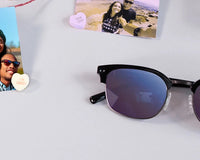
SARS-CoV-2 spreads from person to person via small respiratory droplets. These are generated when a person with the virus exhales, coughs, or sneezes. You can contract the virus if you breathe in these droplets.
Additionally, respiratory droplets containing the virus can land on various objects or surfaces. Touching a contaminated object or surface and then touching your eyes, nose, or mouth can also lead to infection.
Homemade face masks
Homemade face masks only offer a small degree of protection, but they may help prevent the spread of SARS-CoV-2 from asymptomatic people. The CDC recommends using them in public settings, as well as practicing social distancing and proper hygiene.
Surgical masks
Surgical masks can’t protect against infection with SARS-CoV-2. Not only does the mask not filter out smaller aerosol particles, but air leakage also occurs through the sides of the mask as you inhale.
N95 respirators
N95 respirators can protect against smaller respiratory droplets, such as those containing SARS-CoV-2. However, the CDC currently doesn’t recommendTrusted Source their use outside of healthcare settings. There are a variety of reasons for this, including:
- N95 respirators should be fit-tested in order to be used appropriately. A poor seal can lead to leakage, lowering the respirator’s effectiveness.
- Due to their tight fit, N95 respirators can become uncomfortable and stuffy, making them difficult to wear for extended periods of time.
- Our worldwide supply of N95 respirators is limited, making it critical that healthcare workers and first responders have ready access to them.
Other effective ways to prevent COVID-19
Remember that there are other effective ways besides using face masks to prevent becoming ill with COVID-19. These include:
- Cleaning your hands frequently. Use soap and water or an alcohol-based hand sanitizer.
- Practicing social distancing. Avoid contact with people who are sick, and stay at home if there are many COVID-19 cases in your community.
- Being conscious of your face. Only touch your face or mouth with clean hands.
How to use a surgical mask if you have the 2019 coronavirus
If you have symptoms of COVID-19, stay at home except to receive medical care. If you live with others or are visiting a healthcare provider, wear a surgical mask if one is available.
Remember that while surgical masks don’t protect against infection with SARS-CoV-2, they can help trap infectious respiratory secretions. This can be a vital tool in helping prevent the spread of the virus to others in your surroundings.
So, how do you properly use a surgical mask? Follow the steps below:
- Clean your hands, either by washing with soap and water or by using an alcohol-based hand sanitizer.
- Before putting the mask on, inspect it for any tears or holes.
- Locate the metal strip in the mask. This is the top of the mask.
- Orient the mask so that the colored side faces outward, or away from you.
- Place the top part of the mask on the bridge of your nose, molding the metal strip to the shape of your nose.
- Carefully loop the elastic bands behind your ears or tie the long, straight ties behind your head.
- Pull the bottom of the mask down, ensuring that it covers your nose, mouth, and chin.
- Try to avoid touching the mask while you’re wearing it. If you must touch or adjust your mask, be sure to clean your hands immediately afterward.
- To take off the mask, unloop the bands from behind your ears or undo the ties from behind your head. Avoid touching the front of the mask, which may be contaminated.
- Promptly dispose of the mask in a closed garbage bin, thoroughly cleaning your hands afterward.
You can look for surgical masks at various drugstores or grocery stores. You may also be able to order them online.










